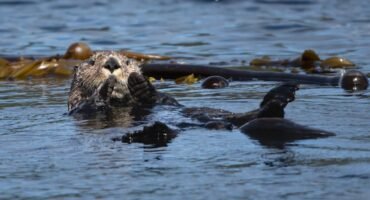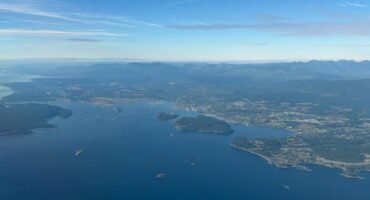
The Drake and Ushuaia
This post is part of our epic adventure to the Falklands, South Georgia, and Antarctica. In case you don’t want to read this sequentially, or you are looking for a specific part of the trip, here are some shortcuts:
- Introduction
- Departure Day
- Santiago, Chile
- Torres del Paine, Chile
- El Calafate, Argentina
- Ushuaia, Argentina
- Embarkation Day
- Stanley, Falkland Islands
- Sea Days
- Tour of the Ship
- Right Whale Bay, South Georgia
- Salisbury Plain, South Georgia
- Grytviken, South Georgia
- Fortuna Bay, South Georgia
- Stromness, South Georgia
- Godthul, South Georgia
- St. Andrews Bay, South Georgia
- Gold Harbour, South Georgia
- Cooper Bay, South Georgia
- The Scotia Sea Surprise
- Cuverville Island, Antarctic Peninsula
- Port Lockroy, Antarctic Peninsula
- The Drake and Ushuaia, Argentina <– You are here
Port Lockroy / Jougla Point – January 12th
62°25’1″ S, 63°51’9 W
-1 Celsius / 30 Fahrenheit – Overcast

The Drake Passage is a legendary and often challenging stretch of water located between the southern tip of South America (Cape Horn) and the Antarctic Peninsula. It is renowned for its turbulent waters and volatile weather conditions. The convergence of the strong Antarctic Circumpolar Current with the prevailing westerly winds can create intense waves and powerful storms, making it one of the roughest seas in the world. The passage’s reputation for unpredictable weather and rough seas has earned it the nickname “Drake Shake” when conditions are stormy and “Drake Lake” when it’s relatively calm.
We were told that our crossing was “almost a Drake Shake” but it was enough that even our wristbands and kwells couldn’t keep the sea sickness at bay. We skipped most meals, opting instead for crackers and ginger ale delivered to our cabin. We were well enough to make the final gathering of the snorkellers, where we viewed a slide show and saw what we’d missed snorkelling on the peninsula. All good though, we were already planning our return!
After two and a bit days, we arrived at the entrance to the Beagle Channel and picked up a pilot to guide us the rest of the way. We docked in the middle of the night, transferred the ill passenger to a waiting ambulance, and then went out to anchor in the harbour.
We had a few options for how to spend the surprise day in Ushuaia: a tour of Tierra del Fuego National Park, or a catamaran trip to the Los Lobos Islands. We opted for the catamaran trip which was a perfect way to end our voyage. We saw sei whales, sea lions, Andean condors, and even a blackish cinclode.












Our final day started around with an amazing sunrise around 4:30am. We had a very early breakfast as the ship pulled anchor and headed for the dock. There were several other ships in port, and it was fun to watch the captain essentially parallel park the ship with ease.


We bid farewell to the ship, staff and Expedition Team around 8am. If your flight departed before 2pm, you were taken straight to the airport. Our flight didn’t depart until slightly after 2, so our luggage was loaded onto a coach but we had a few hours to kill until heading to the airport around 11:30. We did a few laps of town, got a souvenir passport stamp, and then settled in a cafe until it was time to leave.

Given Ushuaia is literally at the end of the world, international connecting flights are a challenge. Flights from Ushuaia land at Aeroparque Jorge Newbery (AEP) whereas international flights depart from Ministro Pistarini International Airport (EZE). They are 31 km (19 miles) apart but the journey can take anywhere from 30 minutes with no traffic to an hour and a half at peak hour. The other challenge is that flights to the US typically depart at night. We decided to spend a night in Buenos Aires to break up the journey.
The flight home was surreal. The photos and video don’t do this adventure justice. It was, hands-down, one of the most amazing experiences of my life. And I can’t believe that we get to return next year!
The End
We’re Andy and Jennifer—two former corporate executives who chose long ago to prioritise experiences over stuff while pursuing our passions for travel and photography. From the Arctic to Antarctica, and most places in between, we’ve captured the world through our lenses and love sharing those stories. Our careers gave us the means, but our purpose is inspiring others to explore and helping people create images they’re proud of.




